
NYSE American, formerly known as the American Stock Exchange (AMEX), and more recently as NYSE MKT, is an American stock exchange situated in New York City. AMEX was previously a mutual organization, owned by its members. Until 1953, it was known as the New York Curb Exchange.

The Mexican Stock Exchange, commonly known as Mexican Bolsa, Mexbol, or BMV, is one of two stock exchanges in Mexico, the other being BIVA - Bolsa Institucional de Valores. It is the second largest stock exchange in Latin America, only after São Paulo based B3 in Brasil. It is also the fifth largest stock exchange in the Americas. The exchange platform is owned by BMV Group, which also owns the derivative exchange MexDer and the custody agency Indeval.

The Toronto Stock Exchange is a stock exchange located in Toronto, Ontario, Canada. It is the 10th largest exchange in the world and the third largest in North America based on market capitalization. Based in the EY Tower in Toronto's Financial District, the TSX is a wholly owned subsidiary of the TMX Group for the trading of senior equities.

B3 S.A.– Brasil, Bolsa, Balcão, formerly BM&FBOVESPA, is a stock exchange located in São Paulo, Brazil, and the second oldest of the country.
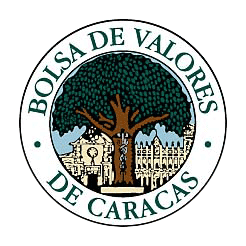
The Caracas Stock Exchange or Bolsa de Valores de Caracas (BVC) is a stock exchange located in Caracas, Venezuela. Established in 1947, BVC merged with a competitor in 1974.
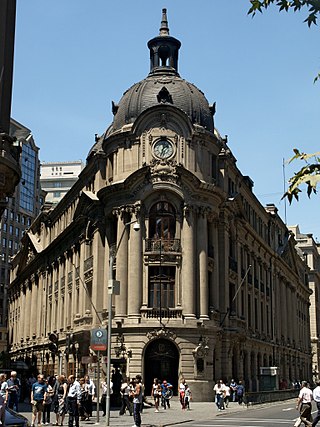
The Santiago Stock Exchange (SSE), founded on November 27, 1893, is Chile's dominant stock exchange, and the third largest stock exchange in Latin America, behind Brazil's BM&F Bovespa, and the Bolsa Mexicana de Valores in Mexico. On December 5, 2014, the Santiago Stock Exchange announced it was joining the United Nations Sustainable Stock Exchanges (SSE) initiative, becoming the 17th Partner Exchange of the initiative.

Euronext Lisbon is a stock exchange in Lisbon, Portugal. It is part of Euronext pan-European exchange. The most famous index is PSI-20.
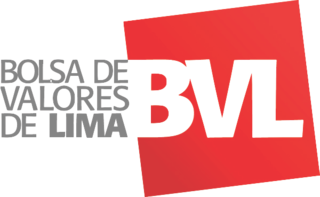
The Lima Stock Exchange is the stock exchange of Peru, located in the capital Lima. It has several indices. The S&P/BVL Peru General Index is a value-weighted index that tracks the performance of the largest and most frequently traded stocks on the Lima Exchange.

The Colombia Securities Exchange is a stock exchange which was created as a result of merging three independent stock exchanges: Bogotá, Medellín and Occidente. It has offices in Bogotá, Medellín and Cali. Furthermore, with the bvc Training Centers the company is located in 19 Colombian cities through agreements with universities and chambers of commerce.
A regional stock exchange is a term used in the United States to describe stock exchanges that operate outside of the country's main financial center in New York City. A regional stock exchange operates in the trading of listed and over-the-counter (OTC) equities under the SEC's Unlisted Trading Privileges (UTP) rule.
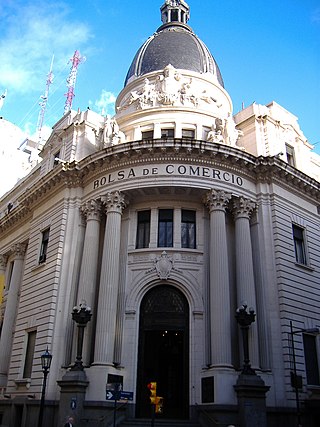
The Rosario Board of Trade is a non-profit making association based in Rosario, in the Province of Santa Fe, Argentina. Founded on August 18, 1884, it serves as a forum for the conduct of trade negotiations in several markets including grain, oilseed, agricultural products and their by-products, as well as securities and other assets.

The phrase curbstone broker, curb-stone broker or curb broker refers to a broker who conducts trading on the literal curbs of a financial district. Such brokers were prevalent in the 1800s and early 1900s, and the most famous curb market existed on Broad Street in the financial district of Manhattan. Curbstone brokers often traded stocks that were speculative in nature, as well as stocks in small industrial companies such as iron, textiles and chemicals. Efforts to organize and standardize the market started early in the 20th century under notable curb-stone brokers such as Emanuel S. Mendels.
The Salvadoran Stock Exchange is the stock exchange in the nation of El Salvador. The exchange is used for the securitization of various government infrastructure projects. It is overseen by Central Securities Depository (CEDEVAL).
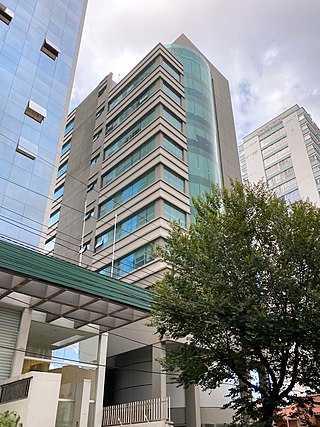
The Bolivian Stock Exchange is a stock exchange based in the city of La Paz, Bolivia. Which began operations in 1989, the exchange offers trading of equities, indexes, gold, and local commodities.
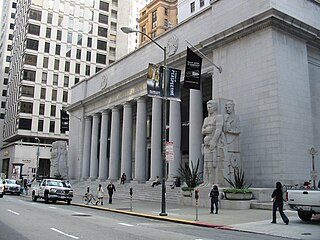
The San Francisco Stock and Bond Exchange was a regional stock exchange based in San Francisco, California, United States. Founded in 1882, in 1928 the exchange purchased and began using the name San Francisco Stock Exchange, while the old San Francisco Stock Exchange was renamed the San Francisco Mining Exchange. The San Francisco Curb Exchange was absorbed by the San Francisco Stock Exchange in 1938. In 1956 the San Francisco Stock Exchange merged with the Los Angeles Oil Exchange to create the Pacific Coast Stock Exchange.

The San Francisco Curb Exchange was a curb exchange opened in 1928, formed out of a re-organization of the San Francisco Stock and Bond Exchange and the San Francisco Mining Exchange. The San Francisco Curb Exchange replaced the Mining Exchange at the 350 Bush Street building. The Curb Exchange later left the building in 1938, when the Curb Exchange was absorbed by the San Francisco Stock Exchange.

The San Francisco Mining Exchange was a regional stock exchange in San Francisco that operated from 1862 until its closure in 1967.
The Chicago Curb Exchange was an organized securities market and curb exchange located in Chicago, Illinois. It was alternately known as the Chicago Market.














